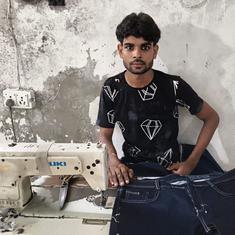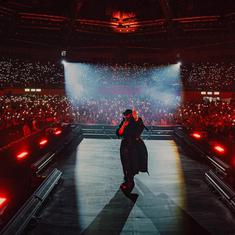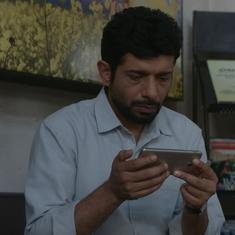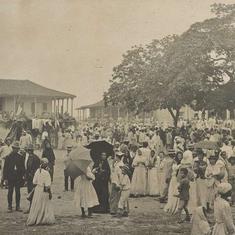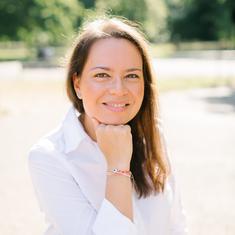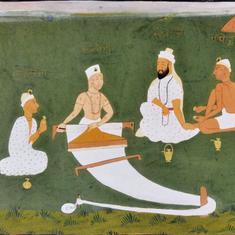A psychoanalyst once told me that memory is what you wish to remember. I was repeatedly reminded of this insight while viewing No Longer a Memory, the latest solo exhibition by BS Shivaraju, popularly known as Cop Shiva, and curated by Joshua Muyiwa.
The photo performance series draws upon the artist’s memories of growing up in Bannikuppe in rural Karnataka surrounded by local myths, legends, folktales and stories that he often enacted with his mother at home.
Excerpts:

How did you conceive this project?
That’s a long story. If you may recall, before the arrival of digital photography, our visits to friends and family involved a viewing of the family photo album which comprised photos with parents, siblings, extended family, and friends. This happened with me over and over again. And while I was always fascinated with the ritual of the family album and what it contained, I realised that I didn’t have one for myself and my family.
I grew up poor. Very poor. My mother worked as an agricultural labour for more than three decades to raise three children. My father, though around, was never much of a help. My mother knew that she had to get out of the house and work to support the family. She is illiterate. There’s very little else that she could have done and the village economy doesn’t offer women like her many opportunities either.

I vividly remember that my grandfather once took my mother and myself to a photo studio near Channapatna. We entered the studio and saw the ongoings but didn’t have the money for a photo. I returned disappointed.
I didn’t have a single photo with my mother while growing up and even much later in my teens. We just couldn’t afford it. Even a simple photo was a luxury. I have no photographs of my childhood for memory. They are stored in my mind however. This project, in many ways, is an outcome of that feeling trying to address what I lacked in my life and recreate the moments and memories of my childhood with my mother.

Your mother, Gowramma is clearly the most moving presence in this photo series. How did you prepare to direct/work with her?
This is an ongoing project. I started working on it around 2016-’17. So, this exhibition took me close to eight years to make. I always knew that my mother had to be a part of it because I was also staging memory through photo performance. She was game since the beginning and her spontaneity on the sets left me surprised. She has amazing visual sense and maybe that’s where I get it from. She is my collaborator and co-creator in the project. The photos wouldn’t be what they are today without her involvement and the desired performance.
The shoots would often take the entire day. She was the first person to get ready and wait patiently till the end. She knew this was work for her son and she gave it her all. I think she especially enjoyed playing different characters wearing different make up and costumes enacting lives very different from her own. She was much thrilled to see the final exhibition and enjoyed all the attention at the opening when so many walked up to her asking for selfies. I think she was very overwhelmed and a bit emotional too.

There’s so much happening in the photos – the backdrop, roleplay, costumes. Tell us about that.
The characters that we perform in the photos – from various mythological stories and folktales are stories we grew up with. My grandfather used to take me to watch mythological plays which was our only source of entertainment in the village. He would often tell me that when you grow up, you must be like Bheema or some other mighty person. I remember all of that. And very often after watching these performances, I would play these characters with my mother at home.
We have recreated several of those characters in this photo series but this is a very labour-intensive process. Choosing a character also involves detailed research into costume and other related attributes. Also, which backdrop to choose for the photos? I spent a lot of time thinking and researching backdrops to faithfully recreate studio photography of that time.
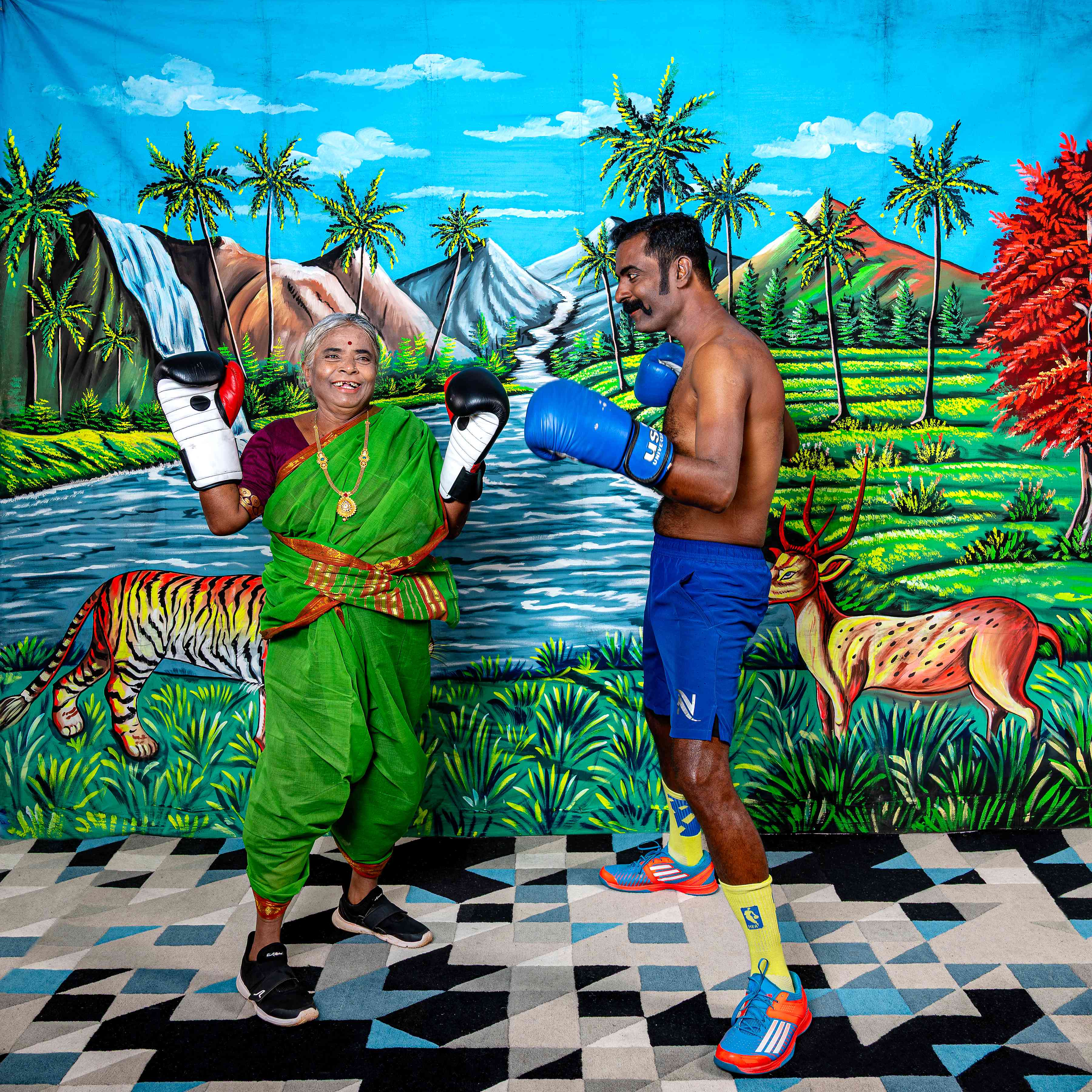
I also want to hear about the studio photography aesthetic which is such an important part of this series.
That’s very important. I have always been interested in this genre of photography which is now a thing of the past. Studio photography involved a performance of sorts. Don’t you think so? The backdrops created imaginary situations for the photos. It was almost like make believe and added another layer to the photos. I wanted to capture this same aesthetic in this project. Also, I like this aesthetic and I miss it. It also supports my long-standing interest in the art of the masquerade. In my previous work, I have often conceived the street as a studio space staging my projects there. With this new project, I think my work is taking a new direction. Perhaps.

These photos are very location or culture specific but could speak to a larger audience. Do you have any thoughts?
That’s true. Most of these stories are from my village or what I grew up listening and watching but I don’t think that’s necessarily a limitation for viewing this work.
Let me illustrate this with an example. In many homes across rural Southern India, you will come across images of two donkeys or owls or cows adorning the entrance of the house. It is considered a sign of good luck. I have recreated this story in my photo performance but how would you view my work without knowing the story? Images are always open to interpretations and that’s the fun of it all.
You can also view my work/this entire series without the culture specifics and decode them in the way you like. After a point, I don’t want to explain the photos and tell people how and what to see in them. It’s very tiring. And how much can you explain and why? These are also human stories involving two people and their actions.

And they are funny too. I don’t know if that’s intentional?
I often think about humour in my work. I don’t know why humour is so frowned upon in the arts. It’s important to laugh. If my photos can make people laugh, there’s no harm. Laughter is also a form of engagement.
Personally, my friends will affirm that I like to make people laugh. I have grown up with so much misery and hardships all along that I know the importance of joy in human life. And I am not interested in creating misery photos from the rural Indian hinterland.

I noticed that you have dispensed with white walls in the gallery. The walls sport bright colours like green, yellow, and pink supporting the images on display. And fabric used for the backdrop in the photos are also part of the décor.
Joshua and I decided this together. And it was very kind of the gallery to support us in this decision. The wall colours and fabric are part of the exhibition. Most homes in my village including my own are painted in stark bright colours like the ones we have used. I have tried to create that feeling which may help to view the images on display plus acknowledge the fabric used for the backdrops in the photos sourced during my travels across textile markets in Bengaluru, Mumbai, Pune etc. It is interesting that the fabric caught your attention because several artists who came to the opening made it a point to talk to me about how much they liked the fabric idea.

Were there any visual references for you while creating this series of photos?
The work of Pushpamala N has always been a big influence. I have assisted her in two projects in the past and learnt a lot. She is a perfectionist to the core and a trendsetter. I am not formally trained in photography or the visual arts. Amongst other things, I learnt construction of an image and the basics of photo performance working with her. She is a pioneer in so many ways.
Another photographer that I continue to learn from is Malick Sidibe who hailed from Mali and practiced studio photography. He had an amazing quality of infusing humour into his work and I love the way he shows people.
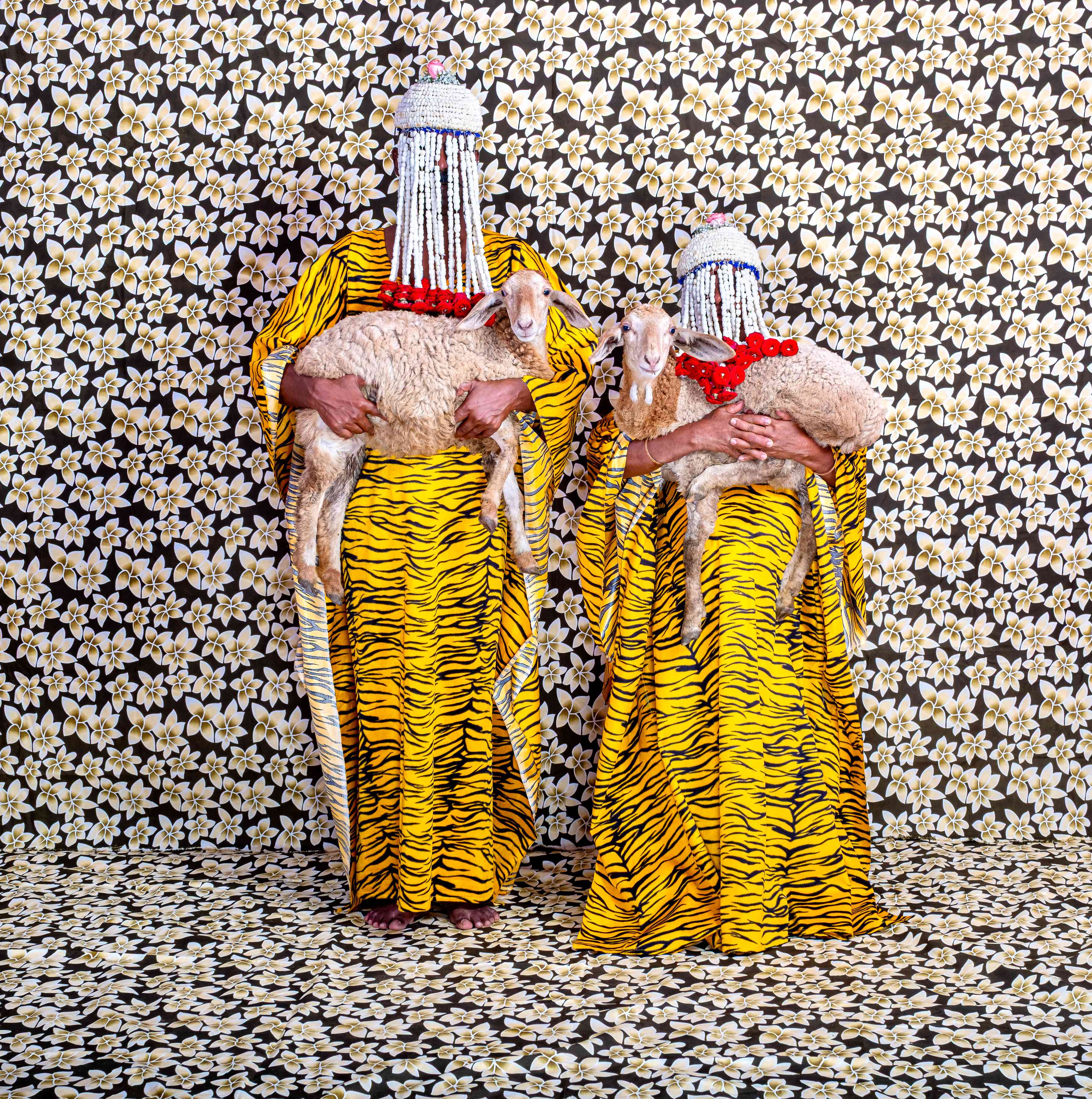
How do you want people to see this exhibition? Do you have any expectations?
Come with an open mind. This is a tribute to my mother in some ways. I think that could be a strong point of identification perhaps for many viewers of this work or so they have told me. Also think emotionally and not just intellectually.
No Longer a Memory is on display at Gallery Sumukha, Bengaluru, till June 28.
Kunal Ray writes extensively about art & culture in India. He teaches at FLAME University, Pune.
